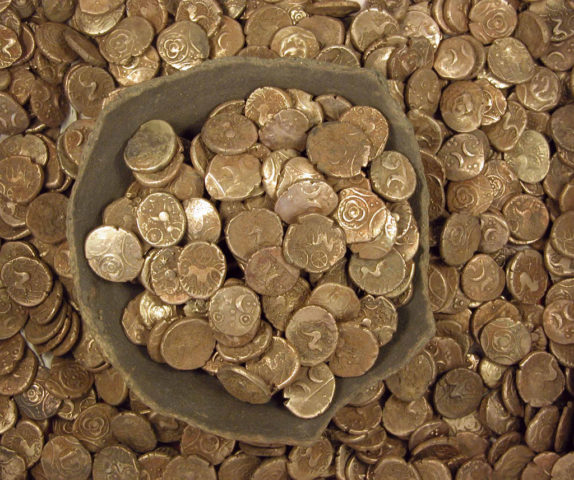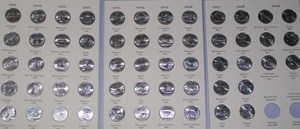A lot of people call themselves coin collectors. But what’s the difference between collecting coins and hoarding coins?
Everybody has their own definitions of what coin collecting means versus what coin hoarding is.
However, I have a few of my own opinions on what coin collecting is versus what coin hoarding is based on my observations of numismatics and what trends the hobby has seen since the 1800s.
While you may or may not agree with these definitions, you may find a little more light will be shed here on the differences between hoarding coins and collecting coins.
Now, a person may not necessarily be a hoarder because they have a coin hoard. After all, hoarding and hoarders are often defined by psychologists. Besides, I’m not a doctor offering medical advice here. I am, however, able to define what a coin hoard is versus a coin collection based on the characteristics of the two types of coin-accumulation traits!
Collecting Coins
Coin collecting is the practice of assembling a set (or sets) of coins.
Here are some of the common coin set goals:
- To complete a type set
- To finish a date-and-mintmark coin set
- To build a set of topical coins
- To add to a year set
- To put together set of error coins
Notice the word set has been used in each of the above types of coin collecting.
Building sets (of any type) is a very important aspect of coin collecting. Why? Because coin collectors primarily aim to assemble sets of coins. Though, that doesn’t always mean the set of coins will be completed.
For example, when building a topical set of coins, a coin collector is trying to find all the different coins that have common designs. A topical coin collection of animals will have coins with designs of animals on them. Such a coin collection may never be finished, however, because mints from all across the world are striking coins with animal designs virtually every year.
You could, in theory, find one example of each animal-themed coin ever made from every mint in the world and still not finish the set. Why? Because X mint in the country of Y may be making an animal coin next year – and you’ll be wanting that animal coin in your collection!
All the other types of collecting mentioned above may also never be completed, because – depending on your exact goal – there may be more coins being made in the coming years which will belong in your collection.
However, the aim with coin collecting is to have a defined goal of assembling a set (or sets) of coins which represents something significant and important to numismatics.
Hoarding Coins
While building sets of coins may seem like hoarding to some, there is a true difference between coin collecting and hoarding coins. Remember how I mentioned above coin collecting tends to involve the assembly of sets of coins? Well, coin hoarders tend not to think about building sets (so much). Usually, coin hoarders will simply gather coins without regard to building sets from those coins.
A coin hoard is, in general, a gathering of coins which are bought or picked out of circulation because of any number of reasons:
- The coins contain precious metal
- The designs on the accumulated coins are no longer in use
- There may be other reasons that aren’t commonly attributed to coin hoards
While coin hoards are often quite valuable, they however, are not coin collections in most numismatists’ eyes because those coins are not being gathered with the aims of completing or contributing to a set of coins.
It’s important to remember that every coin collector has some extra coins lying around that really don’t belong to any coin set.
Those coins, in themselves, really don’t constitute a coin hoard. A coin hoard, in most respects, is an ever-growing stash of coins that are being thrown into a box, jar, drawer, or other gathering place without any purpose of being added to or forming the basis of a set of coins built because of numismatic interest.
Now, let me set the record straight on coin hoards: coin hoards can be just as valuable (or even more valuable) than actual coin collections. After all…
- People with a hoard of silver or gold coins may be sitting on enough money to retire.
- A hoard of 500,000 old Lincoln wheat cents — if sold — may be able to buy a you a new car!
- Parents can send their kids to college if they have a coin hoard with the right type of coins.
The Bottom Line
When it comes down to actually defining a coin collector versus a coin hoarder, it’s always important to remember that:
- Typical coin collectors generally aim to build sets of coins…
- Whereas coin hoarders spend most of their coin time simply stashing away coins without the intention of building sets.







